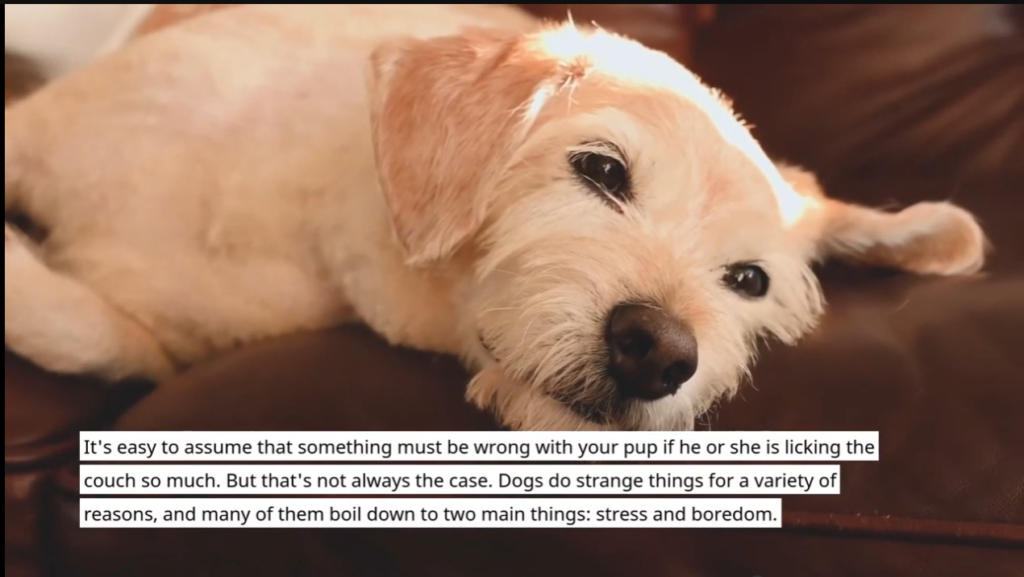Why does my dog lick my pillow – Understanding six reasons
Has your furry friend been spotted repeatedly licking and nuzzling their face into your pillow? As strange as this behavior seems, there are several reasons why dogs enjoy licking pillows and bedding. Understanding their motivations can help curb unwanted pillow-licking while providing a comfortable resting place for your pup.

Seeking Comfort and Your Scent
One of the primary drivers for pillow-licking in dogs is the search for comfort and familiar scents. To pack animals like canines, nothing provides more reassurance than the smells left by their closest companions. Your pillow absorbs your distinctive odor each night as you sleep.
For puppies or rescue dogs still adjusting to a new home, coating their mouth and face in your comforting smell transfers that security feeling. It also reinforces their bond with you as pack leader. Established family members sometimes miss their human when gone and find relaxation in lingering traces of scent.
Relief from Teething or Gum Pain
In teething puppies from 3-6 months old, licking behaviors often stem from sore gums and emerging new teeth. The soothing texture of pillows or blankets against irritated mouths distracts from discomfort, while natural oils in fabric or stuffing ease inflammation.
Offering approved chew toys specially designed for teething puppies can redirect this natural behavior to acceptable outlets that satisfy their need to nip and chew what feels good on sensitive gums. Consistently replacing pillows with endorsed toys teaches young dogs appropriate substitution.
Settling Anxiety or Boredom
For dogs with separation anxiety who miss you when away or are bored when home alone, licking pillows for familiar scents becomes a coping mechanism. It provides mental stimulation and temporary relief from stressed or idle minds.
Exercising your dog before leaving, providing puzzle toys with small treats hidden inside, and going on calming music or TV soften anxiety signals from their owner’s absence. Crate training or baby-gating pups near family activities also prevents unsupervised pillow-licking.
Expressing Natural Pack Behaviors
In a dog’s eyes, their family equals pack members. Some scientists theorize pillow-licking stems from instincts to groom and attend to other pack animals for social bonding and hierarchy reasons. Even lone wolves display similar licking, nipping, and nuzzling behaviors toward their young as nurturing actions.
While house pets no longer need to establish dominance, allowing a few minutes per day for your dog to safely lick or nibble pillows in a supervised, controlled setting can satisfy these deep-rooted drives without damaging belongings if kept brief. Just be sure to wash pillows regularly.
Marking Territory
Dogs possess potent scent glands in their mouths. By licking pillows, bedding, and other textiles around your home, they spread personal markings to discretely “flag” their territory. Subconsciously, this reassures an insecure pup they belong alongside their human family.
Rotating dog beds, blankets, and toys weekly for thorough cleaning helps prevent a pillow from becoming one over-marked object. Brush stroking with vanilla or other pleasant-smelling essences also supplies your reassuring scent without requiring direct licking contact.
Keeping Pillows Pet-Friendly
Unless caused by medical issues, most pillow licking stems from instincts dogs struggle to override without guidance. Some precautions maintain boundaries while still addressing their core needs:
– Reserve specific dog beds or blankets for scent-marking, and wash human pillows daily.
– Offer alternative chew toys near pillows with your worn shirt tucked inside for smell.
– Spritz pillowcases lightly with calming pheromone sprays made for anxious pets.
– Crate training or baby gates teach containment while owners are away.
– Wearing dogs out through exercise and enrichment prevents boredom nipping.
With habit redirection and satisfying separate needs, most dogs can learn to respect off-limit pillow areas over time. Understanding why they are drawn provides keys to curb licking while strengthening pack bonds. Your furry friend needs a few safe outlets to express instincts.